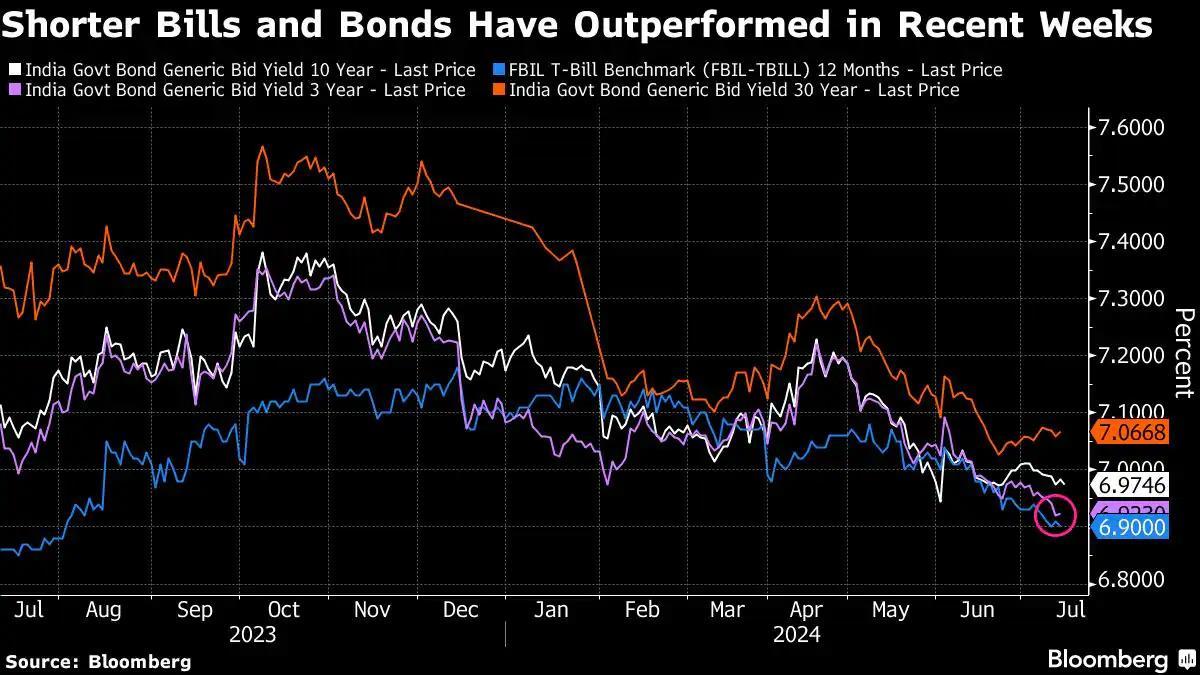Foreign banks buy Indian short-term bonds, Bank of America announces
According to Clearing Co-op of India (CCIL) data, foreign banks purchased approximately 600 billion rupees (7.2 billion dollars) at full maturity from the beginning of June, despite the fact that state-owned banks and mutual funds were oversold. CCIL does not classify data by maturity.
According to the person in charge of the Indian bond division of Bank of America Corporation, when banks around the world purchase Indian sovereign bonds, they use improved liquidity while supply is limited and target shorter maturities.
According to Clearing Co-op of India data, while state-owned banks and mutual funds were selling, foreign banks purchased approximately 600 billion rupees (7.2 billion dollars) at full maturity from the beginning of June. CCIL does not classify data by maturity.
Investors' motivation for short-term bonds is mainly due to an increase in government spending and improvements in bank liquidity due to increased government spending and large amounts of bonds that have reached maturity, in addition to declining supply of short-term treasury securities, Vikas Jayne, who is in charge of Indian bonds/currency/commodity transactions at Bank of America, said in an interview.
The preference for short-term bonds emphasizes the general tactic of using such financial products to manage balance sheets. Also, since JPMorgan Chase incorporated Indian government bonds into the emerging market index last month, it also shows that the Indian bond market is moving rapidly.

The inclusion of JPMorgan in the index is also increasing demand for bonds. “Foreign banks are also increasing their inventories to meet this demand because demand for government bonds from foreign portfolio investors is increasing.
The Indian authorities surprised the market by reducing the sale value of treasury short-term securities with a maturity of up to 1 year in the previous fiscal year by 600 billion rupees. As a result, the yield on 10-year bonds rose by 3 points, while the yield on 3-year bonds fell by 7 basis points last month.
Improved liquidity lowered overnight interest rates, lowered borrowing costs for banks to buy bonds, and boosted demand for short-term bonds, Jain said. It is said that foreign banks expanding into India, which are benefiting from improved liquidity, often manage assets and liabilities with short-term bonds.
The yield on 10-year bonds, which is an indicator, is still not below the 6.95% level despite the inflow of funds incorporating the index. If the government realizes budget deficit reduction with the budget, it could be the next major trigger for the market, says Jayne.
“If the budget deficit falls below 5%, there is a possibility that it will be divided by 6.95%. “If that happens, there is no doubt that we will move towards a yield level of 6.75% to 6.80%. The 10-year bond yield rose 1 basis point to 7% on Monday.
There is a high possibility that the Reserve Bank of India will cut interest rates by 100 basis points over the next year and a half. If the repo rate reaches 5.5% by 2026/3, “there is room for the yield curve to drop further.”
Disclaimer: Community is offered by Moomoo Technologies Inc. and is for educational purposes only.
Read more
Comment
Sign in to post a comment
